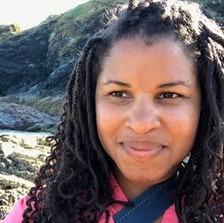Melanie Malone
Associate Professor

B.A. Geology and English, Williams College
M.S. Soil Science, Oregon State University
Ph.D. Earth, Environment, and Society, Portland State University
Office Number: UW1-244
Email: drmalone@uw.edu
Phone: 425-352-5336
Teaching
As an instructor, I spend much of my time exposing students to a variety of methods that are intended to increase their learning capacity. My primary goals in teaching are to explain how policy translates to on the ground practice, and to enable students to see how things work to understand them. In line with my teaching goals, I incorporate technologies and methodologies that are used for environmental management into my classes as much as possible, which may include anything from showing students how to do field methods, to flying drones, or taking students to sites to see how environmental remediation technology works.
I also believe that allowing students to teach is the best way for students to find out if they really understand the topic they are teaching. To that end, I often incorporate time in my classes for students to teach one another in a friendly and respectful setting. This practice enables students to identify holes in their own learning, while sharing information with others. It also encourages students to utilize more creative and critical thought while investigating topics they want to understand.
Research/Scholarship
My primary research interests include soil degradation, contamination, and spatial analysis. Prior to my academic career, I spent a number of years as a Geologist cleaning up contamination at industrial sites and superfund sites in Portland, Oregon where I became familiar with a number of environmental policy and remediation issues that affect much of the U.S. This experience spurred the foundations for much of my recent research, which explores how the methods and technologies used to improve the environment result in complex social and environmental outcomes, some for the better, and others for the worse. For example, my most recent research investigated how agricultural conservation management programs funded by U.S. farm bill policies actually results in land degradation and increased herbicide use.
At the core of my research is the examination of how environmental problems arise from the combination of biophysical, institutional, political, and cultural dynamics. I find the emerging field of critical physical geography (CPG) to be the most useful field for my type of research.
I also do research in a wide variety of other environments, from urban gardens, forests, and remote rural agricultural watersheds. I am currently working on a number of projects involving contaminants in soils and their effects on people. As a researcher interested in how physical spaces are affected by environmental problems, I also incorporate a variety of spatial mapping techniques into my research including GIS, remote sensing, and flying with drones to identify contaminants in soils and plants. For some of my recent research, see my UW News article.
Selected Publications
- Malone, M., Hamlin, S., Richard, S.I. (2023) Uprooting urban garden contamination. Environmental Science & Policy 142, 50–61. https://doi.org/10.1016/j.envsci.2023.01.016
- Malone, M., McClintock, N., 2022. A critical physical geography of no-till agriculture: Linking degraded environmental quality to conservation policies in an Oregon watershed. The Canadian Geographer / Le Géographe canadien n/a.
- Malone M. (2021) Seeking justice, eating toxics: overlooked contaminants in urban community gardens. Agriculture and Human Values.
- Malone, M. (2020). “Teaching critical physical geography”. Journal of Geography in Higher Education.
- Denham D, Rozance MA, Malone M, and Goodling G (2020). “Sustaining future environmental educators: building critical interdisciplinary teaching capacity among graduate students”. Journal of Environmental Studies and Sciences.
- Malone, M. and Foster, E. (2019). “A mixed-methods approach to determine how conservation management programs and techniques have affected herbicide use and distribution in the environment over time.” Science of the Total Environment.
- “Malone, M. and Polyakov, V. (2019). “A physical and social analysis of how variations in no-till conservation practices lead to inaccurate sediment runoff estimations in agricultural watersheds.” Progress in Physical Geography.
- Kelley, L.C., Clifford, K.R., Reisman, E., Lea, D., Matsler, M., Liebman, A., and Malone, M. (2017). “Charting a Critical Physical Geography Path in Graduate School: Sites of Student Agency.” In: Lave, R., Biermann, C., and Lane, S. (eds). The Palgrave Handbook of Critical Physical Geography. Palgrave Macmillan.